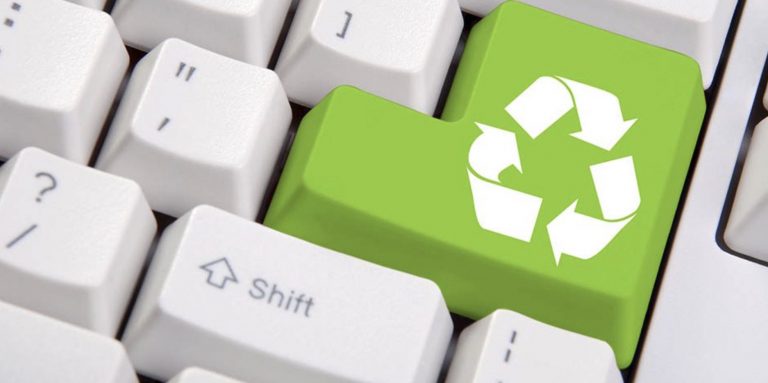Over the last few years, many businesses have discovered the importance of recycling. Recycling is an important part of waste management that makes businesses more efficient, as well as providing a happier and healthier environment for their employees. Furthermore, as more consumers are becoming eco-conscious, they’re demanding that the businesses they deal with are environmentally responsible.
In this article, we’ll walk you through how to set up a recycling program for your business. But first, let’s take a look at why this is so important.
Why it’s Important for Businesses to Recycle
According to Businesswaste, 31% of companies admit to using more paper than they did five years ago. The data shows that companies throw away up to 80% of used paper, with only 7.5% reaching a recycling centre.
So it’s not surprising that an increasing number of businesses want to save money by cutting their waste and setting up a recycling program. This will not only help to make your workplace a healthier, more organized, and more pleasant environment to work in, but you’ll also be doing your bit to help the environment.
Statistics reveal that recycling in the UK grew from 17% in 2008 to 39% in 2018. This is an sign that shows how businesses, as well as the community in general, are appreciating the importance of recycling more and more.
How to Set up a Recycling Program
Here are some of the best practices for creating a commercial recycling program to help you get started.
- Perform a Waste Audit at Your Workplace
If your business does not have a recycling program in place, the first step is to conduct a waste audit to determine what is being thrown away. This will help you to understand your recycling needs, including the type of items you need to recycle. It’s also a good idea to contact your local council to see what type of materials they accept and in what form.
- Appoint a Recycling Manager
You may manage your own recycling program at first, depending on the size of your organisation. However, in larger businesses, a dedicated recycling program manager may be required. The manager should have strong attention to detail and organisational skills.
This person should also be enthusiastic about the recycling program – this way they’ll encourage other people in the company to support your recycling efforts. The recycling manager can assist you with your waste audit, communication with your local recycling program, bin setup, signage creation, progress monitoring, and motivating your employees to participate in the program.
- Start Small and be Patient
While most things in your organisation can be recycled, taking on too much too soon can overwhelm your employees. Start with small steps and then gradually step up your goals. For example, you can start with simple bins for paper, cardboard, and plastic. You will notice a big change simply by recycling these three types of materials.
- Make it Easy for Everyone to Participate.
If you don’t already know, now is the time to conduct a simple employee survey to figure out what’s going on. It may discover that your bins are in the wrong location, are difficult to access, or are difficult to use because they lack clear instructions.
According to Rubicon, 9 out of 10 people say that they find recycling symbols confusing. Put signs or photographs on your recycling bins to tell employees what can and cannot be recycled. You can use colour coding to encourage your team to participate.
- Make Recycling Bins Noticeable
The location of your recycling bins is also important. Make sure you have enough bins according to your number of staff and the size of your space. Put your bins in prominent areas and make sure they are visible and easy to access. It can also be helpful to place recycling bins near high-traffic areas, such as the copy room and the break room.
- Reduce the Overuse of Paper in the Company
According to a survey conducted by the ORS Group, 76% people admitted printing out unnecessary documents. Given that the majority of office waste is paper, encouraging your employees to be more vigilant with their use of paper can make a big difference. This will not only cut down on waste, but it will also make your employees more efficient.
- Communicate Frequently with Employees
Discuss your recycling initiatives at staff meetings and explain why they are so important. Include your recycling program in your employee handbook and in orientation of new hires. You could also put up a recycling information board where employees can get further information and clarification on what can and cannot be recycled.
- Involve your Employees in the Recycling Program
Make recycling the priority for everyone in the company. Discuss it regularly with your employees and emphasize how it relates to the goals, values, and mission of your company. It can be a good idea to form a recycling committee with staff members that want to be more involved. Allow them to be inventive and encourage them to come up with new waste-reduction strategies.
- Gradually Step up the Pace
Once everyone has adopted the recycling culture, you can ramp up your efforts. As well as introducing systems to recycle new types of materials, you can also look for new ways to reduce waste. This is also a great time to create exciting reward programs for employees. Be sure to keep communicating to your staff around your goals and successes.
A thorough recycling program is a long road with many stops along the way, but the payoff is worth it for your bottom line, staff satisfaction, and, most importantly, the environment.
